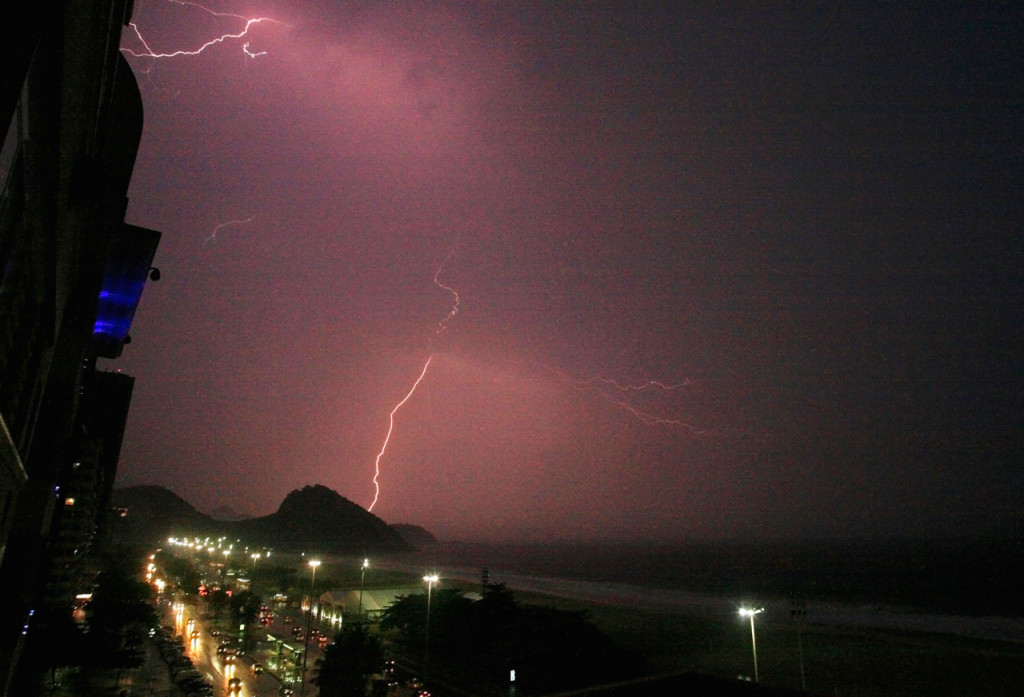
Lightning strikes in Rio. View from near Copacabana beach.
Photo by Laszlo Ilyes licensed Creative Commons Attribution.
Moreover, each year the number of lightning strikes has been increasing. Researchers at Elat believe that recent climate change is the culprit; they estimate that for every degree the temperature rises, the frequency of lightning can increase by between 10 and 20 percent.
Over the last 10 years, lightning bolts have been the cause of 1,321 deaths in Brazil. Last year alone there were 81 fatalities. The largest number occurred in the North (the state of Amazonas receives the largest number of lightning bolts; around 11 million a year), followed by the Central-West. The fewest number of deaths occurred in the South.
However, according to lightning specialist Oscar Pinto Junior, coordinator at Elat, the number of deaths is less a result of the frequency of lightning strikes than it is education and awareness levels. “If you go to regions where access to Internet or the media is limited, the number of deaths by lightning increases,” he pointed out in a recent interview posted on BBC Brasil. “Our research shows that 80 percent of deaths can be avoided if people know how to react during a storm.”
Elat realized that the same tendency holds true in the U.S.–which last year ranked 3rd in terms of lightning bolts with 35 million strikes. In fact, it studied American lightning-related safety procedures when putting together a primer aimed at helping Brazilians steer clear of high risk situations. However, it ended up having to make some adaptations due to cultural differences.
In the U.S., for example, many people are struck by lightning while out playing golf; the likeliness of this occurring in Brazil is about the same as having your car skid out of control on black ice. In Brazil, meanwhile, the leading activities linked to death by lightning are outdoor farming tasks such as taking care of cattle or working in the fields with metal tools and equipment. Unsurprisingly, 10 percent of Brazilian lightning fatalities take place on soccer fields.
To make sure you don’t get zapped while in Brazil, here are some Lightning Tips: